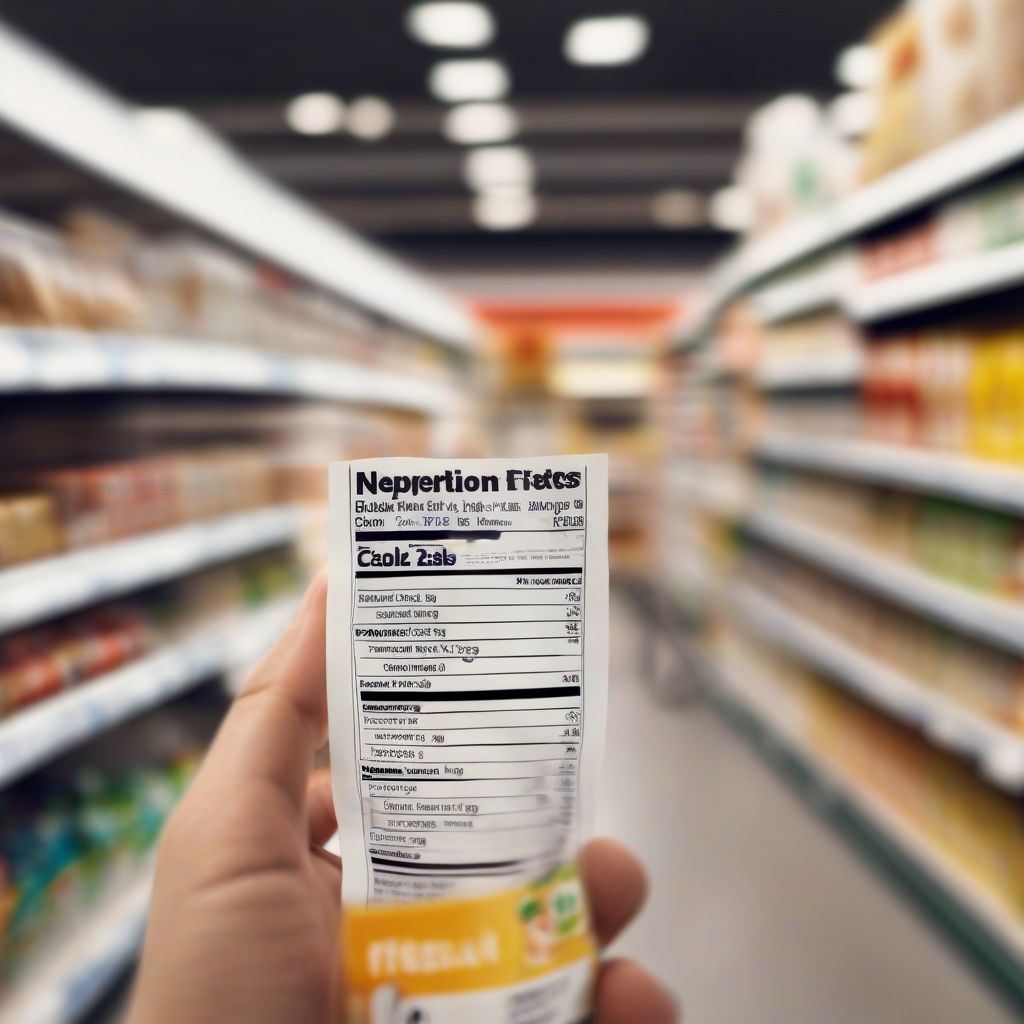Ever stood in the grocery aisle, staring at a wall of colorful packages, feeling utterly bewildered? You’re not alone. Decoding food labels can feel like cracking a secret code. But understanding these labels is crucial for making informed choices that support your health and nutritional goals. As a registered dietitian and meal prep coach with eight years of experience, I’m here to simplify this process and empower you to navigate the supermarket with confidence.
Decoding the Nutrition Facts Panel
The Nutrition Facts panel is your primary source of information. It’s a standardized snapshot of a food’s nutritional value. Let’s break down the key components:
Serving Size: The Foundation of Your Calculations
Pay close attention to the serving size, as all the information on the panel is based on this amount. It’s often smaller than you might think! Compare the serving size to the amount you typically eat to accurately assess your intake.
Calories: Fueling Your Body
This tells you the number of calories per serving. Managing calorie intake is essential for weight management.
Total Fat, Saturated Fat, and Trans Fat: The Fat Facts
Not all fats are created equal. Limit saturated and trans fats, which are linked to heart disease. Focus on healthy fats like those found in avocados, nuts, and olive oil.
Cholesterol: Keeping It in Check
High cholesterol can increase your risk of heart disease. Monitor your intake, especially if you have high cholesterol.
Sodium: The Silent Culprit
Excess sodium can contribute to high blood pressure. Aim for low-sodium options whenever possible.
Total Carbohydrate, Dietary Fiber, and Total Sugars: The Carb Conundrum
Carbohydrates provide energy. Choose complex carbohydrates like whole grains, fruits, and vegetables, which are rich in fiber. Limit added sugars, which offer little nutritional value.
Protein: Building Blocks for Your Body
Protein is essential for building and repairing tissues. Ensure you’re getting enough from a variety of sources.
Vitamins and Minerals: Micronutrients Matter
The panel lists key vitamins and minerals and their percentage of the Daily Value (%DV). Aim for a diet rich in a variety of micronutrients.
 reading-food-labels
reading-food-labels
Beyond the Nutrition Facts Panel: Understanding the Ingredients List
The ingredients list provides a detailed breakdown of everything in the product, listed in descending order by weight. This is particularly helpful for identifying allergens, additives, and hidden sugars.
Spotting Hidden Sugars
Sugar hides under many names, including high-fructose corn syrup, dextrose, sucrose, and maltose. Be aware of these sneaky sweeteners.
Decoding Food Additives
Additives are used to enhance flavor, texture, and shelf life. While some are harmless, others may raise health concerns. Research unfamiliar additives to make informed choices.
% Daily Value: Your Guide to Nutritional Adequacy
The %DV helps you understand how a serving of food contributes to your overall daily nutrient intake. 5% or less is considered low, while 20% or more is considered high.
Claims on Food Labels: Separating Fact from Fiction
Food labels often feature claims like “low-fat,” “sugar-free,” or “organic.” Understand what these claims really mean. For example, “low-fat” doesn’t necessarily mean healthy, as the product may be high in sugar or other unhealthy ingredients.
Tips for Savvy Label Reading
- Start with the serving size: Adjust your calculations based on your actual consumption.
- Prioritize nutrient-dense foods: Look for foods high in vitamins, minerals, and fiber.
- Limit added sugars, unhealthy fats, and sodium: Make conscious choices to support your health.
- Don’t be fooled by marketing claims: Scrutinize the Nutrition Facts panel and ingredients list.
- Use food labels as a tool: Empower yourself to make informed choices that align with your nutritional goals.
Real-World Application: Comparing Two Cereal Boxes
Imagine comparing two cereal boxes. Cereal A boasts “low-fat,” while Cereal B highlights “whole grain.” By examining the Nutrition Facts panel and ingredients list, you might discover that Cereal A, despite being low in fat, is loaded with sugar. Cereal B, on the other hand, contains more fiber and less sugar, making it a more nutritious choice.
“The best way to eat healthy is to be mindful of what you’re putting into your body. Reading food labels is a fundamental step in that process.” – Hypothetical quote from a registered dietitian, Dr. Emily Carter.
Conclusion
Reading food labels is an invaluable skill for anyone seeking to improve their nutrition. By understanding the key components of the Nutrition Facts panel and ingredients list, you can make informed choices that support your health goals. Remember, knowledge is power. Equip yourself with the ability to decipher food labels, and you’ll be well on your way to making healthier choices every time you shop. Share your thoughts and experiences with food labels in the comments below! Let’s build a community of informed and empowered consumers. What are some of your biggest challenges when it comes to reading food labels?



